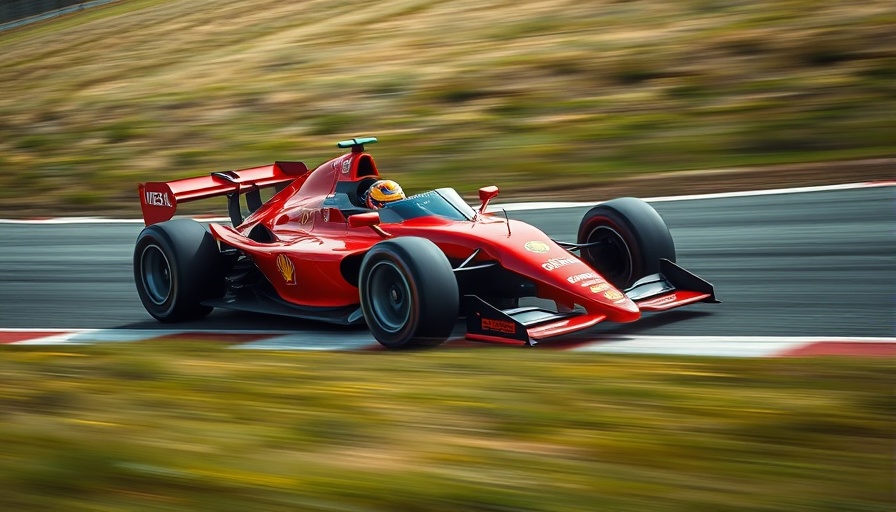
Speed Meets Style: The Intersection of Motorsport and Watercraft
In the fast-paced worlds of motorsport and watercraft, the marriage of speed and style has never been more evident. Just as motorsport technology often finds its way into the automotive industry, innovations from racing are filtering into the marine sector, pushing the boundaries of both performance and design.
Historical Context: The Evolution of Performance Craft
The evolution of speed-oriented design in sports vehicles can be traced back to the turn of the 20th century. The automotive industry was born amidst a backdrop of both mechanical innovation and growing public fascination with speed. By the 1920s, significant advancements in engineering and aerodynamics began to reshape what was possible on the roads. Similarly, racing yachts have undergone their own transformations, particularly in the context of events like the America’s Cup, which has served as a catalyst for design innovation since its inception in 1851.
Technological Transfer: How Racing Enhances Maritime Design
Today, the parallels between motorsport and marine engineering are likened to the engineering challenges faced by both sectors. For instance, marine professionals are increasingly looking towards motor racing technology to enhance performance, particularly electric powertrains. Adrian Newey, a renowned Formula 1 engineer, has led initiatives to apply racing simulations and modeling techniques to modern yacht design, showcasing the effectiveness of motorsport technology in achieving peak performance in watercraft.
Current Innovations: The Shift Towards Electrification
The push towards reducing emissions has propelled the need for efficient electric propulsion systems in both racing circuits and maritime applications. Trucking sectors, ferries, and even personal yachts are evolving, adopting advances such as hybrid powertrains that originated in motorsport. Innovations from series like Formula E—where maintaining battery efficiency is critical—have paved the way for similar practices in marine applications. Factors such as speed, drag reduction, and overall efficiency are becoming central to modern yacht designs, mirroring the ethos of racing.
Challenges Ahead: The Reliability and Sustainability Equation
Despite the palpable excitement surrounding these developments, both fields face unique challenges. Racing conditions demand extreme reliability, similar to the marine environment which subjects vessels to salty air and constant wear. The need for durability, particularly in electric systems which must endure harsh marine elements, becomes paramount. Furthermore, maintaining performance while ensuring sustainability offers a complex equation for engineers and designers alike.
Future Predictions: The Path Forward for Performance Craft
Looking ahead, the intersection of motorsport and watercraft is poised for significant growth. With advances in lightweight materials, such as carbon fiber composites, and improved aerodynamics from racing, future vessels are likely to blend astonishing performance with cutting-edge technologies. Innovations like hydrofoiling are expected to revolutionize yacht racing, just as design improvements have transformed the automotive industry over the past century.
Real-World Examples: Racing Yachts Redefining Speed
The AC75 class boats from the America’s Cup epitomize this evolution, using massive hydrofoils to achieve speeds that rival those of their automotive counterparts. The melding of aviation technology with marine engineering presents not just a challenge but a tremendous opportunity for innovation in design, efficiency, and sustainability. Teams have invested millions into research and development, showcasing how modern yachts are more akin to high-performance airplanes than traditional water vessels.
Consumer Impact: What This Means for Recreational Boating
For the average consumer, the integration of racing technology into recreational boating means enhanced performance and more sustainable options. As commercial manufacturers and enthusiasts alike begin to embrace this technology, boating could become not only a pastime but a cutting-edge technological experience akin to motorsport, setting a new standard for what it means to enjoy time on the water.
As we stand at this crossroads of innovation, the interplay of motorsport and marine engineering will continue to provide exciting advancements. Motor racing has always pushed the envelope; as it converges with the maritime world, the possibilities for speed, style, and sustainability become boundless.
 Add Row
Add Row  Add
Add 




Write A Comment